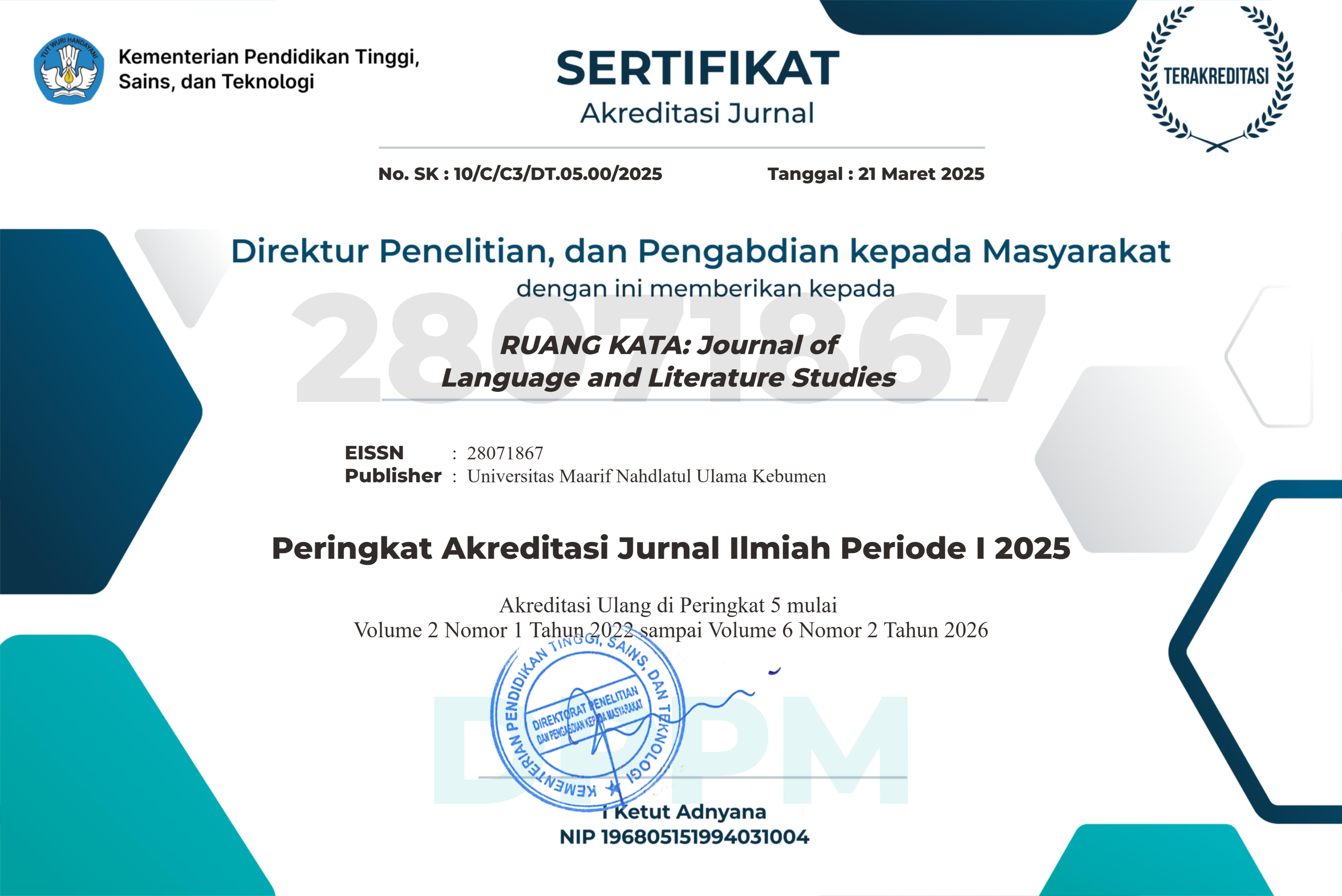Membingkai Kasih Ibu Lewat Diksi: Studi Semantik dan Emosi dalam Lirik Lagu Ina’ (Ibu) Karya Apang
DOI:
https://doi.org/10.53863/jrk.v5i01.1700Keywords:
lexical semantics, emotion analysis, cultural linguistics, Ina’Abstract
This study aims to examine the semantic meanings and emotional content embedded in the lyrics of Ina’, a traditional song by Apang from Sumbawa, which centers the figure of a mother as the embodiment of love and sacrifice. Unlike previous studies that rarely combine semantic and emotional analysis within the context of Sumbawan folk songs, this research applies a lexical semantic approach and emotion analysis grounded in cultural linguistics to explore how word choices convey deep affective, spiritual, and social values. The study employs a qualitative-descriptive method, collecting data through lyric documentation, observations of local cultural contexts, and semi-structured interviews with native speakers and cultural practitioners. Data were analyzed by identifying denotative and connotative meanings, as well as interpreting emerging emotional themes. The findings reveal that the lyrics of Ina’ contain positively connoted expressions that evoke empathy, gratitude, and respect toward the mother figure. This highlights that language in traditional music serves not only as an aesthetic medium but also as a means of transmitting familial and spiritual values deeply rooted in Sumbawan culture. The implications of this research are expected to enrich cultural linguistic and semantic studies based on local wisdom, while also supporting efforts to preserve oral literature through scholarly approaches
References
Aminuddin. (2016). Semantik: Pengantar Studi tentang Makna. Bandung: Sinar Baru Algensindo.
Austin, J. L. (1962). How to do things with words. Oxford University Press.
Bruner, J. (1990). Acts of Meaning. Cambridge, MA: Harvard University Press
Geertz, C. (1973). The interpretation of cultures: Selected essays. Basic Books.
Hochschild, A. R. (1983). The managed heart: Commercialization of human feeling. University of California Press.
Juslin, P. N., & Laukka, P. (2004). Expression, perception, and induction of musical emotions: A review and a questionnaire study of everyday listening. Journal of New Music Research, 33(3), 217–238. https://doi.org/10.1080/0929821042000317813
Kartomi, M. (1990). On Concepts and Classifications of Musical Instruments. University of Chicago Press.
Lakoff, G., & Johnson, M. (1980). Metaphors We Live By. Chicago, IL: University of Chicago Press.
Leech, G. (1981). Semantics: The study of meaning (2nd ed.). Penguin Books.
Lyons, J. (1995). Linguistic semantics: An introduction. Cambridge University Press.
Rochani, S. (2012). Analisis Wacana dan Lagu Daerah. Malang: Universitas Negeri Malang Press.
Saeed, J. I. (2015). Semantics (4th ed.). Oxford: Wiley-Blackwell.
Schaab, F., & Kruspe, A. (2024). Cultural context in musical emotion recognition: A cross-cultural study. Proceedings of the International Society for Music Information Retrieval Conference (ISMIR), 125–133. https://doi.org/10.5678/ismir.2024.125
Scherer, K. R. (2005). What are emotions? And how can they be measured? Social Science Information, 44(4), 695–729. https://doi.org/10.1177/0539018405058216
Sweeney, P. (2001). Voices of the Spirit: Music and Spirituality in Indonesia.
Tronick, E. (2007). The neurobehavioral and social-emotional development of infants and children. W. W. Norton & Company.
Wierzbicka, A. (1999). Emotions Across Languages and Cultures. Cambridge University Press.
Zhang, L., Chen, Y., & Wang, H. (2023). LyEmoBERT: A BERT-based model for emotion classification in song lyrics. Journal of Computational Linguistics, 49(2), 301–319. https://doi.org/10.1234/jcl.2023.301
Downloads
Published
How to Cite
Issue
Section
License
Copyright (c) 2025 Wawan Hermansyah

This work is licensed under a Creative Commons Attribution-ShareAlike 4.0 International License.
Authors retain copyright and grant the journal right of first publication with the work simultaneously licensed under a Creative Commons Attribution-ShareAlike 4.0 International License that allows others to share the work with an acknowledgment of the work’s authorship and initial publication in this journal














